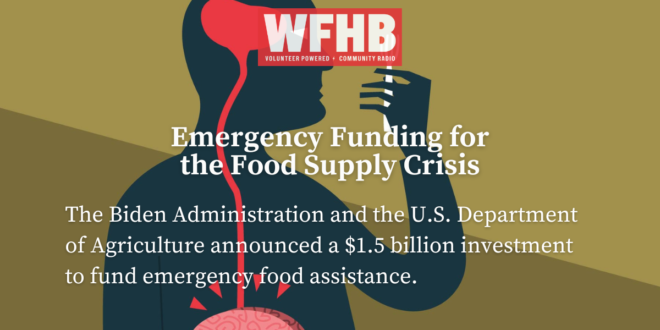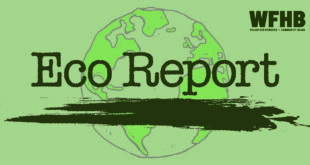Podcast: Play in new window | Download (Duration: 17:25 — 24.0MB)
The Biden Administration and the U.S. Department of Agriculture announced a 1.5 billion dollar investment to fund emergency food assistance. Feeding Indiana’s Hungry, the statewide association of Feeding America affiliated food banks, applauded the investment.
According to the Map the Meal Gap study conducted by Feeding America, one out of every nine Indiana residents faces hunger. One in seven children in the state face food insecurity. The USDA defines hunger as a lack of consistent access to enough food for an active, healthy lifestyle.
Research from Feeding America shows that people who are food insecure are prone to chronic diseases and adverse effects to their overall health. Data also shows that not having enough healthy food can have serious implications for a child’s development, including chronic illnesses and behavioral issues.
Emily Weikert Bryant, Executive Director for Feeding Indiana’s Hungry described how the federal aid will impact Indiana.
“We expect the announcement to be made shortly as to when and how much, but we expect to see that start coming through Indiana at the beginning of the new federal fiscal year, which is October 1st,” said Bryant.
Hoosier Hills Food Bank is a regional organization serving six counties across South Central Indiana. It’s a member food bank of Feeding Indiana’s Hungry. Executive Director Julio Alonso reacted to the recent announcement of funding from the Biden Administration and the USDA.
“This is very exciting and welcome news for us,” said Alonso. “The downside, of course, is that we won’t really start seeing this food until next year, but it is very desperately needed.”
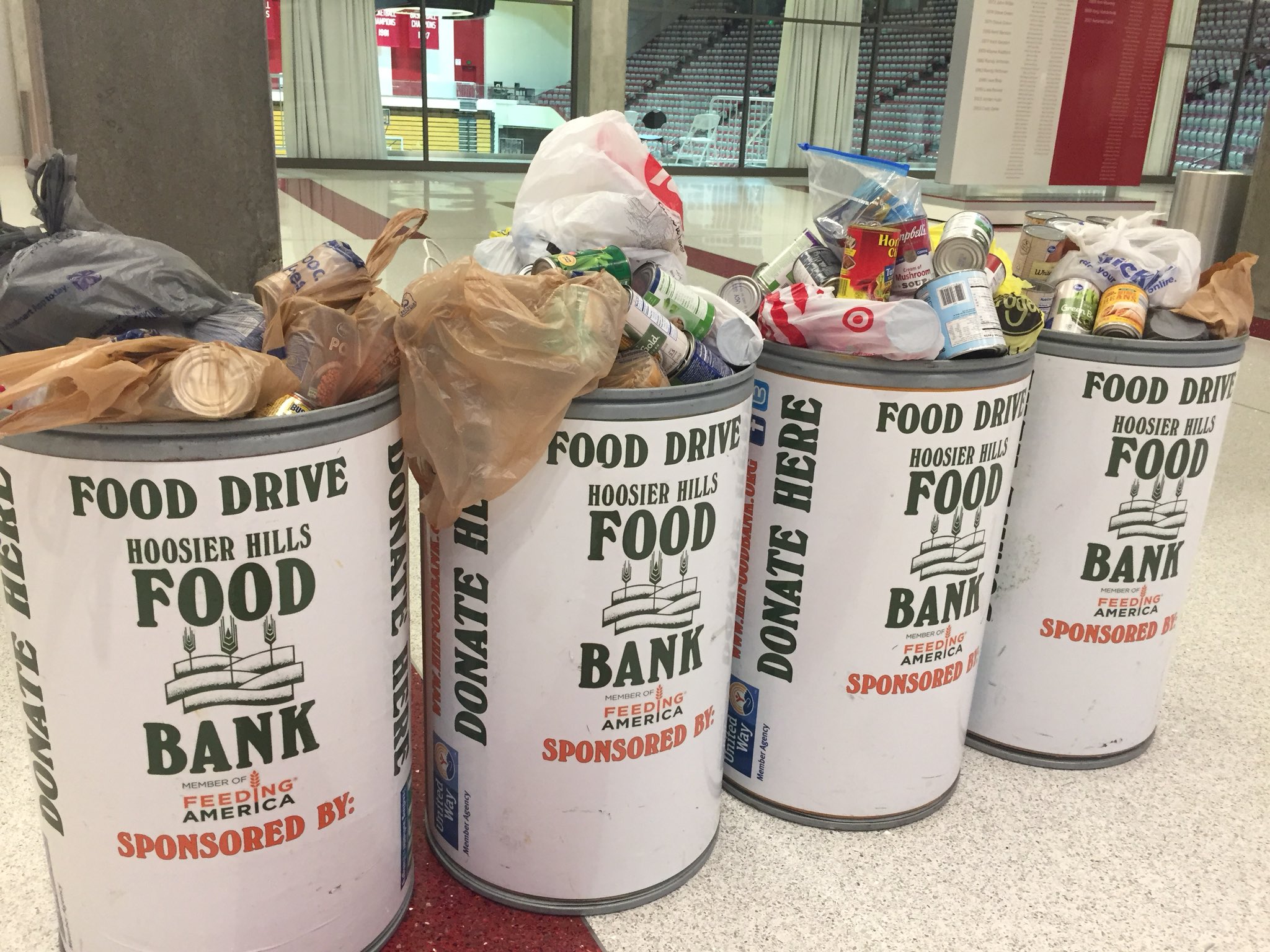
Meanwhile, Weikert Bryant said that food banks in Indiana are confronted with a severe food shortage. She explained how the recent investment aims to address the food supply crisis.
“Food banks, food pantries and families are seeing the same thing across the country where inflation is still impacting food purchasing, and it’s certainly impacting our members as they source food.” she said. “We’ve seen a decrease in food available while we’ve seen the need continue to stay at pandemic levels.”
Alonso said he sees the food supply crisis first hand at Hoosier Hills Food Bank. He explained that the need to address food insecurity in our region is more pressing than ever in 2022.
“We saw a big spike in demand at the start of the pandemic in 2020, and while that was disconcerting and unfortunate, the positive side of that was that we also saw an outpouring of generosity,” he said. “We and a lot of food banks across the country are struggling to meet that demand, because we’re not seeing the same level of support that we did previously.”
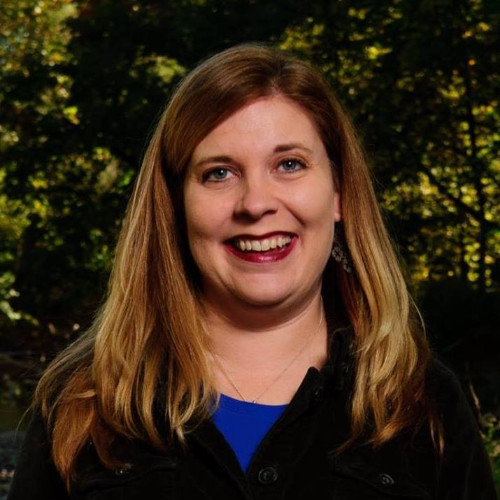
Weikert Bryant explained that there exists a gap between urban and rural communities when it comes to food insecurity. She outlined that gap and explained how funding from the USDA would help alleviate the disparity.
“There’s really been a rising focus on rural areas as underserved areas to make sure that for our friends and neighbors in those areas, they’re able to access the same programs that you would in more populous areas,” she said.
Alonso described the state of food insecurity here in Bloomington, Monroe County and the surrounding counties that Hoosier Hills offers services to.
“Unfortunately, food insecurity is still a pretty significant problem here, both locally and in our region,” said Alonso. “We’re seeing twice as many people come through as we had anticipated, and most of them are indicating that high food prices and high gas prices are really putting a squeeze on them, and many of them are low-income seniors.”
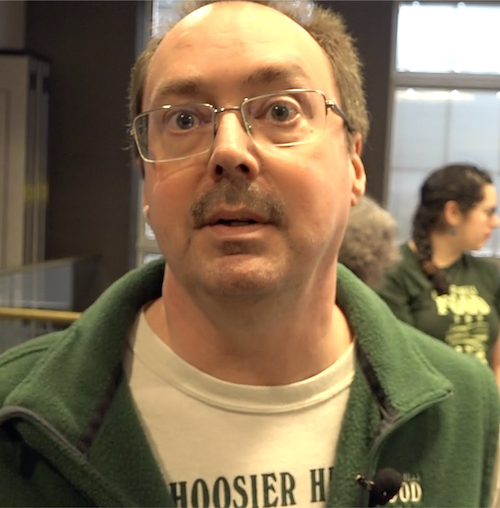
Weikert Bryant walked through the importance of the work Feeding Indiana’s Hungry does, saying that there are Indiana residents who have to make that difficult decision between paying their bills and putting food on the table.
“I have the distinct advantage and honor to advocate on behalf of our organizations and the work that they do. Even having stable food insecurity numbers means that there’s still too many people who are not able to access the food that they need with the funding that they have available,” she said.
Alonso agreed, saying that no one deserves to face hunger and that Hoosier Hills provides one of the most basic human needs.
“We operate from the premise that no one deserves or needs to go hungry. There is enough food out there to meet the needs of everyone if we have the will to marshal the resources to get it out there to people,” he said.
Weikert Bryant called on residents to help out in their communities to assist those in need. She said while volunteer activity increases during the holidays, she sees food insecurity throughout the year.
“We know that there’s always a need for volunteers at the Hoosier Hills Food Bank and the pantries that they work with. There’s always a need for funding. There’s always a need for food,” she said. “I know we’re looking to go into the holidays and that’s when a lot of people think about food assistance, but quite frankly, we see it year round, so it’s 365 days of the year.”
Alonso thanked the community for their generosity during the Covid-19 pandemic but he reminded residents that the need for hunger relief has not let up.
“Even though it seems like COVID may be over or waning at least, the food insecurity crisis is not gone. People are really being squeezed by inflation, and a lot of people have not yet recovered from the impacts of the pandemic,” he said. “So I just want to remind people that that need is still out there and that we and other hunger relief organizations still need their support.”
To learn more about Hoosier Hills Food Bank, you can visit hhfoodbank.org.
 WFHB Bloomington Community Radio
WFHB Bloomington Community Radio
